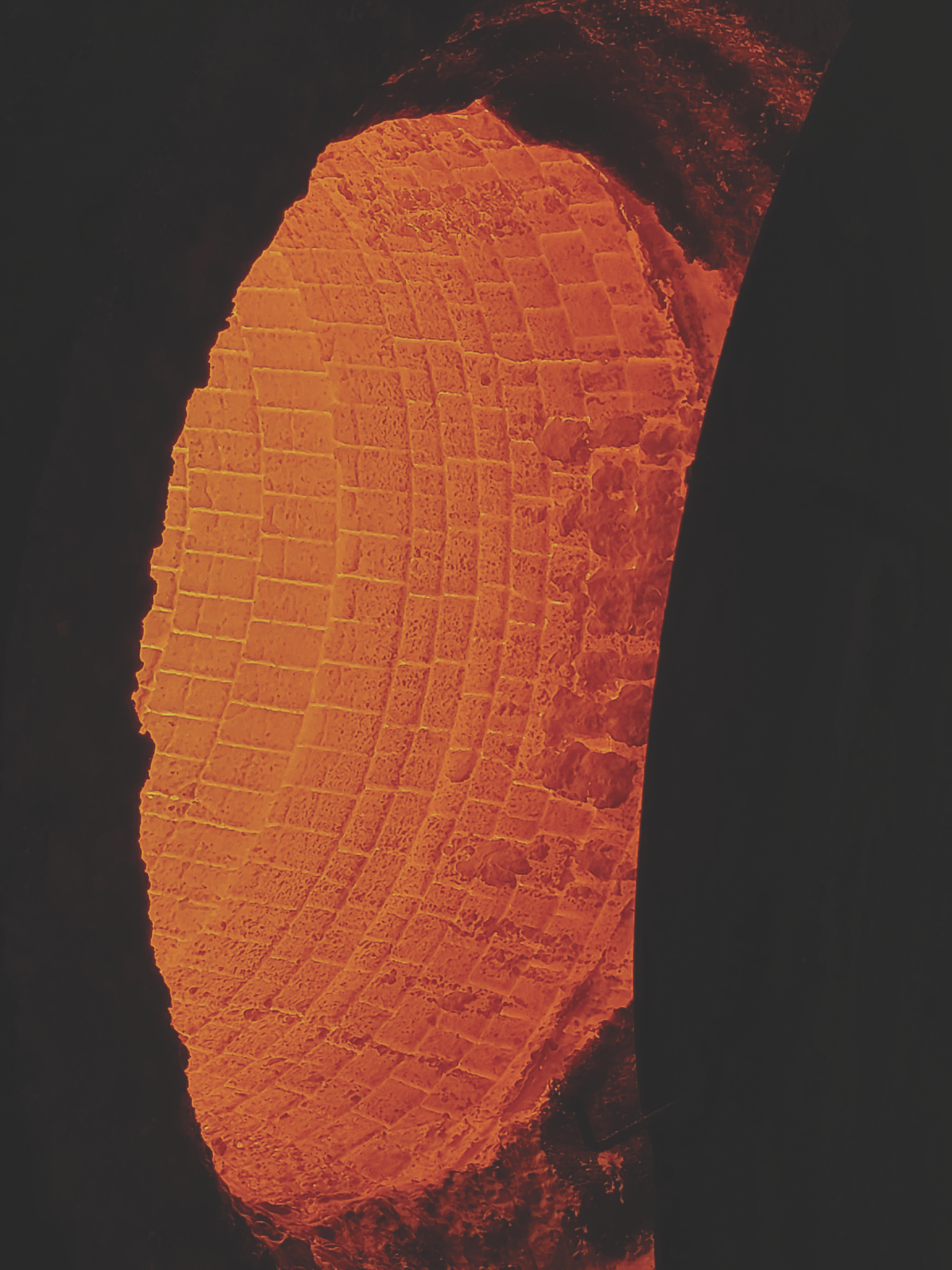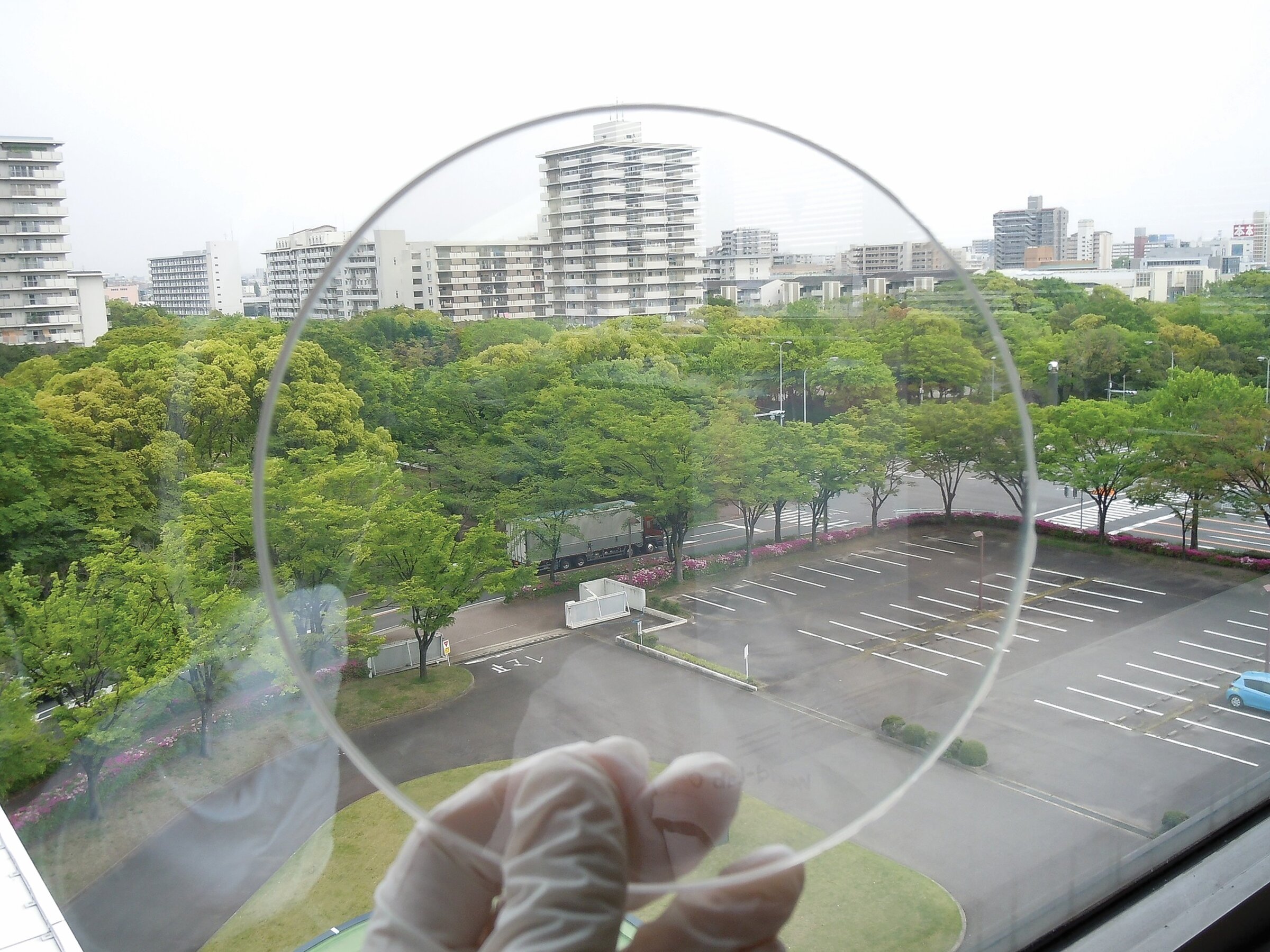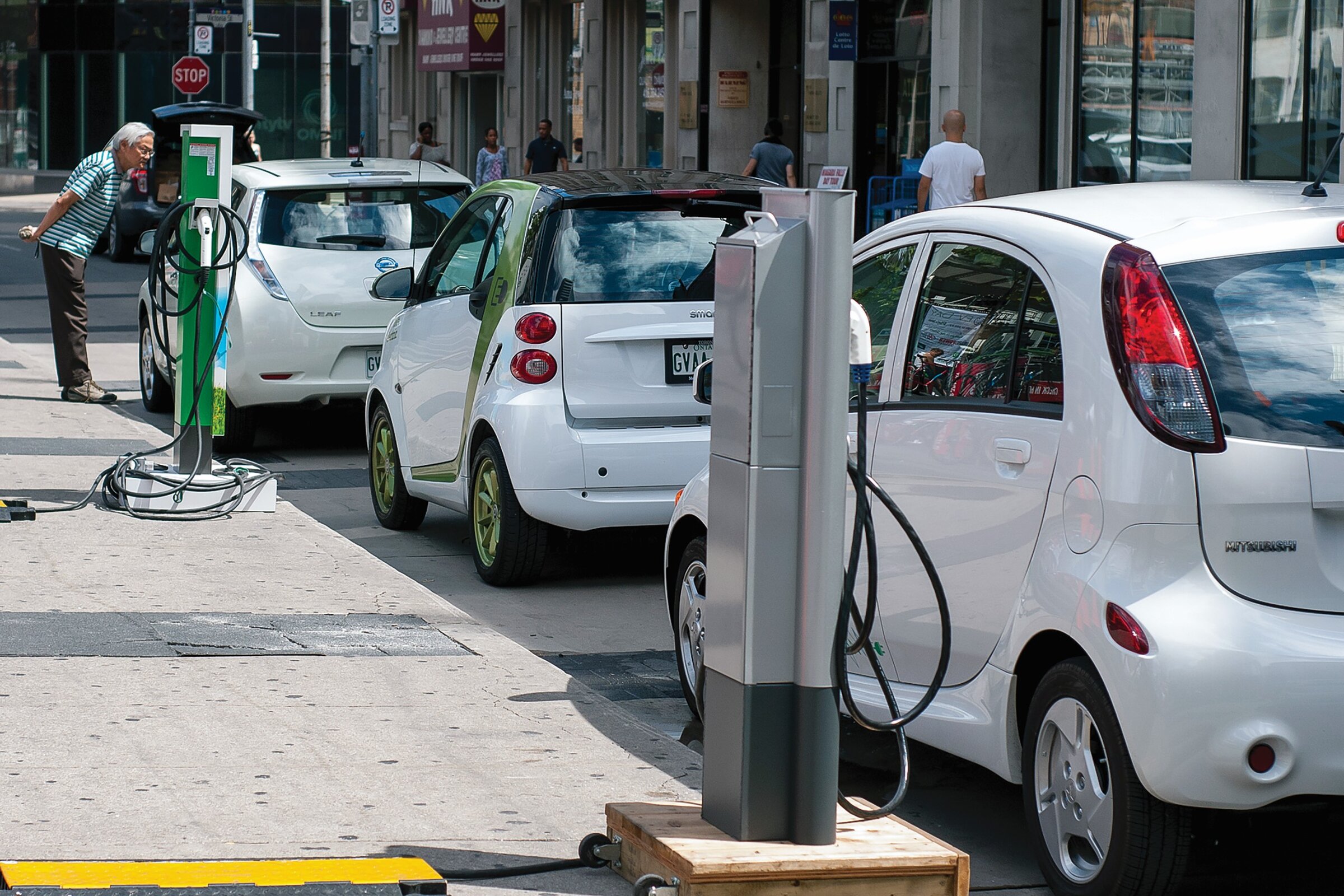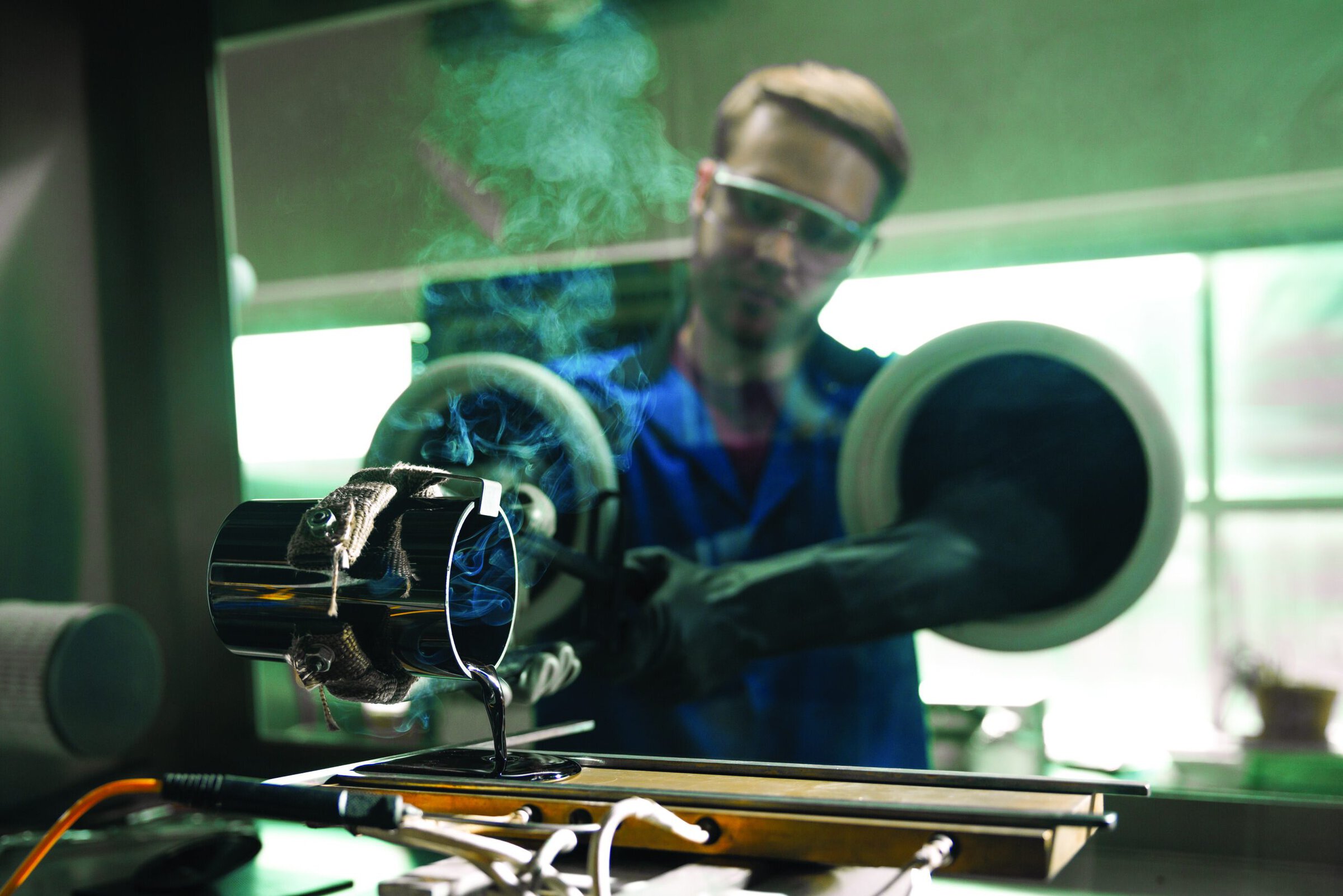Machine learning has become one of the most transformative technologies of our time.
Machine learning (ML) is a field of study in artificial intelligence that uses algorithms and statistical models to analyze and draw inferences from patterns in data without following explicit instructions. This technology has enormous potential to solve complex and real-world problems, so it is no wonder that John Hopfield and Geoffrey Hinton, who laid the foundation for ML with artificial neural networks more than 40 years ago, were awarded the Noble Prize in Physics in 2024.1
In the past several years, ML algorithms have been increasingly employed in the refractory industry, which consumes a high amount of exhaustible natural resources. Thanks to big data collection in metallurgical plants, ML algorithms can be readily applied to the development of more durable, cost-effective, and energy-efficient refractory materials and technologies.
There are several dominant aims of using ML in the refractory industry: predicting refractory lifetime in a service environment, optimizing industrial processes to extend this lifetime, tracking the pattern of wear to reduce failure risk, and optimizing refractory compositions. All these avenues of investigation can contribute to the transformation of the refractory and metallurgical industry to be more environmentally friendly and resource efficient.
Although the benefits of using artificial intelligence tools are unquestionably groundbreaking, the complexity and large number of parameters influencing refractory materials in high-temperature and corrosive industrial processing environments require manufacturers to possess extraordinary insight, a critical approach, and reasonableness. Many manufacturers are willing to put in the work, as demonstrated by the panel “Modeling and Digitalization,” which was held at the 2023 Unified International Technical Conference on Refractories in Frankfurt, Germany.2
During this panel, numerous manufacturers and researchers described how they used computational techniques to improve different aspects of refractory operations. For example, recently published works confirm the usefulness of ML to predict the wear of refractory linings in high-temperature metallurgical environments. The work by Arostegi and Manjarrés is particularly noteworthy because it implements ML for the biggest refractory consumer: steel metallurgy.3 The authors applied several ML techniques to predict the number of remaining heats for a ladle and the wear of the most critical areas. The ML models were developed based on real metallurgical data, and as a result, deviation between the validated and predicted values was small. Such slight variances prove the applicability of the ML models.
Manufacturers must be careful when choosing data to build the ML model, though. For example, Gil et al. highlighted the selection of data from a wide range of accessible metallurgical data across the steel ladle campaign.4 By showing the resultant overfitted ML model based on linear regression and a random forest algorithm, they concluded that failure of ML models can derive from inaccuracies in 3D laser measurements, leading to incorrect residual thickness measurements, too many data points, or missing critical data. So, numerous factors impact the reliability of the ML model.
Determining a reasonable scope for the question to be answered by the ML model can help manufacturers control the impact of too many variables. For example, in the work by Vermeulen et al.,5 they disregarded other process parameters and focused only on maintenance strategy when using linear regression methods to predict the wear and lifetime of converter refractory linings. The study also suggested the use of fixed laser scanners in each converter as more appropriate to improve scan accuracy.
The 3D laser scanner method employed by Vermeulen et al.5 may be useful to other refractory manufacturers because it allows control of the refractory lining condition during operation; however, it may also lead to several misunderstandings, as noted in the work by Gil et al.4
The first step when making laser scans is to prepare a high-quality reference based on the refractory lining thickness before converter operations commence. This step is followed by scans after a specific number of heats throughout the campaign and again at the end of the campaign. However, the laser sometimes treats the slag layer that sticks to the refractory as a refractory lining, so recorded values of lining thickness may be incorrect. What is more, most steel plants do not regularly perform 3D laser scans because the scans require prolonged downtime of the converter, which raises production costs.
To enhance the use and efficiency of the 3D laser scanner method, manufacturers must pursue higher automation and the production of more accurate data. Once this data is collected, it can be used to develop refractory wear maps to inform ML models, which then can predict the wear of specific refractory linings in heating devices.
Thanks to these and other advancements in the application of ML methods, these methods are no longer limited to laboratory-scale experiments; they are starting to support refractory manufacturers in industrial-scale operations as well. For example, in recent work,6 we validated the results of an earlier study on sustainable MgO-C refractory design by installing the refractory on a steel ladle in a Polish steel plant. The successful installation confirmed that the applied approach supports technologists in more effective optimization of mass-scale produced MgO-C refractories, contributing to a more sustainable production process.
In summary, ML has much to offer the refractory industry, and this potential is sure to be realized in the coming years. Learn more about the application of machine learning in refractory design in the open-access paper below, which we published in 2023.
Read the original open-access paper here:
Current state of application of machine learning for investigation of MgO-C refractories: A review
Cite this article
Introduction (shown here):
S. Sado, I. Jastrzębska, W. Zelik, and J. Szczerba, “Refractory advancements: Machine learning enhances material and technological design,” Am. Ceram. Soc. Bull. 2025, 104(2): 20–21.
Republished open-access excerpt (in PDF):
S. Sado, I. Jastrzębska, W. Zelik, and J. Szczerba, “Current state of application of machine learning for investigation of MgO-C refractories,” Am. Ceram. Soc. Bull. 2025, 104(2): 22–27.
About the Author(s)
Sebastian Sado is technologist and product manager and Wiesław Zelik is chief technologist and head of the Research and Development Center at Zaklady Magnezytowe Ropczyce SA (Ropczyce, Poland). Ilona Jastrzębska is assistant professor and Jacek Szczerba is professor at AGH University of Krakow (Krakow, Poland). Contact Sado at sebastian.sado@ropczyce.com.pl and Jastrzębska at ijastrz@agh.edu.pl.
Issue
Category
- Manufacturing
- Refractory ceramics
Article References
1“The Nobel Prize in Physics 2024,” Royal Swedish Academy of Sciences. Published 8 Oct. 2024. Accessed 14 Jan. 2025.
2Unified International Technical Conference on Refractories, 18th Biennial Worldwide Congress on Refractories, 26–29 Sept. 2023, Frankfurt, Germany.
3M. Arostegi, D. Manjarés, “Remaining useful life and wear estimation of the refractory bricks of the ladle lining by artificial intelligence,” UNITECR 2023: Conference Proceedings, 642–645.
4A. Gil, W. Tesselaar, E. Gisolf, “Into the unknown: Explaining and predicting slag line wear based on process parameters,” UNITECR 2023: Conference Proceedings, 662–665.
5F. Vermeulen, W. Tesselaar, E. Gisolf, “Converter on life support: A structured approach to determine the governing parameters of refractory wear to stabilize and prolong the lining lifetime,” UNITECR 2023: Conference Proceedings, 658–661.
6S.Sado, I. Jastrzębska, W. Zelik, J. Szczerba, “Self-organizing maps as a tool to assess possible substitution of fused by sintered MgO aggregates in MgO-C refractories,” Ceram. Int. 2024, 50(9): 14996–15012.
Related Articles
Bulletin Features
Optical-grade ceramics: Historical turning point for the design of optical elements
When observing the microstructure of ceramics, researchers frequently see residual pores and structural defects, such as segregation at grain boundaries. These defects serve as scattering sources of incoming light, which affect the optical properties of ceramics and make them inferior to single crystals in optical applications. But what if these…
Bulletin Features
With safety and performance, ceramic batteries are in the works
Governments around the world are pouring funding and resources into building up renewable energy infrastructure to reduce reliance on greenhouse-gas-emitting fuels. However, relying solely on wind and solar power is challenged by the fact these technologies cannot provide a reliable baseload, which is the constant minimum flow of energy required…
Bulletin Features
Glassy solid-state electrolytes for all-solid-state batteries
The introduction of the lithium-ion battery (LIB) to the market in 1991 revolutionized the energy storage field and enabled the development of portable electronic devices and electric vehicles that are widely available today. The improved energy density and cycle life compared to previous rechargeable batteries, such as lead-acid or nickel-metal-hydride,…





